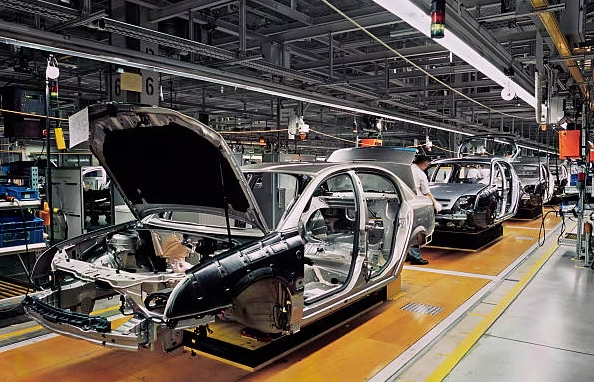According to the latest industry data in 2025, the models of the top ten Chinese new energy vehicle companies have significant differences in charging time and endurance, which are mainly affected by battery technology, charging power and model positioning. The following is a comprehensive ranking and charging efficiency analysis:
I. Top ten Chinese new energy vehicle companies (comprehensive sales and technology)
1. BYD
Representative models: Han L EV, Tang L EV
Technical highlights: Equipped with megawatt-level flash charging technology, supporting 400 kilometers of charging in 5 minutes (10C charging rate), with a maximum power of 1360kW.
Battery capacity: about 80-100kWh, fast charging efficiency leading the industry.
Photovoltaic storage and charging integration: supporting photovoltaic power generation (about 50kW) and 225kws energy storage cabinets to further reduce grid dependence, and the comprehensive grid demand of a single station can be reduced to less than 500kW, further promoting photovoltaic green energy and green travel.
2. Tesla (China)
Representative models: Model Y, Model 3
Technical highlights: V4 supercharger with peak power of 500kW, 5-minute charging and a range of about 120 kilometers, suitable for high-capacity batteries (such as 100kWh).
Charging network: There are more than 2,000 supercharger stations in China, covering a wide range.
3. NIO
Representative models: ES8, ET7
Technical highlights: Supports battery swap technology, charging to 80% in 50 minutes in fast charging mode (84kWh battery), and supercharging power can reach 150kW.
Special services: NIO Power battery swap station provides 5-minute battery swap.
4. Xpeng Motors
Representative models: G9, P7i
Technical highlights: 800V high-voltage platform, 15-minute charging and a range of 300 kilometers (100kWh battery), suitable for S4 supercharger (480kW).
5. Geely Auto (including Zeekr)
Representative models: Zeekr 009, Galaxy L7
Technical highlights: Fully liquid-cooled supercharging technology, 1.2 MW single-gun charging power, 140kWh battery charges from 10% to 80% in just 7-8 minutes.
6. Ideal Auto
Representative models: Ideal L9, first pure electric SUV (unnamed)
Technical highlights: 800V high-voltage architecture, 500 km range after 25 minutes of charging (100kWh battery), target annual sales of 700,000 units.
7. GAC Aion
Representative models: AION V Plus, Hyperbole
Technical highlights: Super-speed battery technology, 200 km range after 5 minutes of charging (A480 supercharging pile), compatible with ternary lithium batteries.
8. Huawei Hongmeng Intelligent Driving
Representative models: Wenjie M9, Zhijie S7
Technical highlights: Megawatt charging products (1.5 MW), plans to achieve a single-gun 3 MW charging rate, and adapt to high-voltage platform models.
9. Chery Automobile
Representative models: Xingjiyuan ES, Tiggo 8 New Energy
Technical highlights: high-density batteries (such as CATL Kirin batteries), charging for 10 minutes and a range of 300 kilometers (800V architecture).
10. Changan Automobile
Representative models: Deep Blue SL03, Avita 11. Technical highlights: full-domain 800V platform, charging for 10 minutes to replenish 400 kilometers, and adapt to 750V super charging piles.
2. The relationship between charging time and battery life
1. Differences in fast charging technology
Megawatt flash charging (such as BYD, Geely): 5 minutes to charge 400 kilometers, requiring a 1000V high-voltage platform and liquid-cooled charging piles.
Mainstream fast charging (800V architecture): 15-30 minutes to charge to 80%, such as Xiaopeng and GAC Aion.
Ordinary fast charging (400V architecture): 30-60 minutes to fully charge, such as Tesla V3 supercharger.
2. Battery capacity impact
The battery capacity of 400 km range models is mostly 60-100kWh, for example:
BYD e6 (82kWh): Fully charged requires about 98 kWh (including loss).
Tesla Model Y (75kWh): Fast charging to 80% takes 30 minutes.
3. Actual charging efficiency
Environmental factors: Charging efficiency decreases by 20%-30% at low temperatures.
Grid restrictions: Supercharging piles may reduce charging speed during peak hours due to grid load current limiting.
III. Future trends
1. Popularization of supercharging: 2025 will become the “first year of flash charging”, and BYD, Huawei and others plan to build more than 4,000 megawatt-level supercharging stations.
2. Battery technology breakthrough: Cooperate with Tianyi and other companies to develop SPEED batteries that can charge 400 kilometers in 8 minutes, with the goal of mass production in 2025.
3. Battery replacement mode: Weilai and CATL promote the standardization of battery replacement, and complete battery replacement in 5 minutes.
Chinese new energy vehicle companies have greatly shortened the charging time through three major directions: high-voltage platform, liquid cooling technology, and megawatt-level charging piles. At present, the leading brands have achieved 400 kilometers of charging in 5-15 minutes, but popularization depends on the construction of supercharging networks and battery cost optimization. When choosing, users can give priority to models that support 800V architecture and liquid-cooled supercharging (such as BYD Han L and Tang L).
















Leave a Reply